Buying your first gun for concealed carry can be an exciting, or stressful, experience. Showing up at your local firearms show can be overwhelming, to say the least. If you’re fortunate, like me, to have an experienced shooter with you, it can make the process much smoother. However, if you’re going it alone, walking into your local gun store can seem like a daunting task.
So, what are the things you should know or think about before buying your first gun?
- Know how to talk about guns intelligently
- Caliber of ammo
- Availability of ammo
- Brand quality
- Gun weight
- Gun size
- Revolver or Automatic
- For automatics, think about magazine setup
- Common or known issues
- Safety features
- Gun maintenance (ease of disassembly)
- Trigger pull
- Carry method
- Paperwork
I’m going to cover each item on this list in detail below. Bear in mind that a lot of these are applicable to future gun purchases, not just your first.
Table of Contents
1. Know How To Talk About Guns
This article is going to cover a lot of information, and chances are you won’t know exactly what I’m talking about at first. However, even if you don’t fully understand something, you can at least talk to the vendor about it.
Engaging the owner with a specific question is much more likely to get you a satisfactory answer. Chances are if your question is something they can show you, they’ll demonstrate with the models they have on display. Shop owners are more likely to engage with an informed customer because it means they are further along in the shopping process.
Furthermore, after reading through these tips, you’ll want to do some research before you walk into the store. The internet is a vast wealth of knowledge when it comes to firearms. You can check out manufacturer websites for details on the latest and greatest in their firearm selection.
Check out any available specifications for the firearms you look at. Use the tips below for the information you should be considering. Make note of the top 3 or so makes and models you’re interested in. The gun show vendor or shop owner can let you know if it’s something they have in stock or something they have to order. However, even if it’s not something they have, they can show you comparable models so you get an idea of what the gun would feel like. Who knows, maybe you’ll end up liking their floor model enough to buy that.
2. Caliber Of Ammo
Alright, so now you know why the research piece is important. Next, let’s talk about one of the things you’ll need to research to be able to talk intelligently. Ammo caliber is the diameter size of the projectile, but you’ll probably refer to it as the bullet.
Why Is Ammo Caliber Important?
Alright, we’re going to get into the weeds a little bit, but I think this information is important. A cartridge consists of 4 pieces, the casing, the projectile, the powder, and the primer. Every time the hammer falls on your weapon, it strikes the firing pin which in turn strikes the primer and causes ignition of the powder. This results in your gun going “bang!” and the projectile leaving the barrel.
Great, but that still doesn’t answer why caliber is important. Well, the larger the caliber, the bigger the barrel has to be. But, that’s not all that gets bigger. Larger calibers typically have a larger casing. A larger casing means a larger magazine. This increases the overall bulk of your firearm.
Furthermore, with larger caliber ammunition more gun powder is required to produce enough force to send the round downrange. The powder and bullet mass are measured in grains, so you’ll typically see something like “230 gr” on boxes of ammunition. Take a look at common calibers to do a comparison. For instance, if you compare a 9mm bullet vs. a .45 ACP bullet, you’ll notice the .45 ACP is a larger round and generally has a higher grain value.
Generally speaking, the higher the grain count, the more force the bullet will produce — either because of bullet mass or amount of powder. Makes sense right? However, that force is transferred elsewhere when the gun is fired. Some will go into the slide on an automatic, but some is transferred to the user. The resulting “kick” is what impacts you. Shooting smaller calibers means less force is generated, and therefore there is less kick.
3. Availability Of Ammo
This one seems like it wouldn’t be a problem. However, there have been tons of different types of ammo produced since the advent of the modern firearm. You’ve probably heard of a majority of them, like 9mm, .45, and .22. These refer to the caliber of the ammo. However, there are also less common calibers for handguns.
My mother owns a firearm chambered for .25 ACP. Her firearm is a sub-compact and ideal for a woman to carry concealed. However, shopping for the ammo can be a bear. Most firearms specialty shops will carry this type of round. But I’ve run into issues when trying to pick up ammunition for her gun when I stopped off at the local sporting goods store.
There are several reasons you’ll want to make sure your ammo is readily available. First, common caliber rounds are likely to not cease production in the near future. Second, being able to purchase ammo in bulk will be easier for the common caliber ammunition. Furthermore, your selection of ammunition manufacturers is broader with the common calibers. Finally, as I’ve covered, finding more common calibers is going to be easier for you. This is great as you’ll hopefully be spending plenty of time at the range perfecting your shooting skills.
4. Brand Quality
As with anything, people exercise a decent amount of brand loyalty when it comes to firearms. People will swear up and down that they “won’t carry anything other than [insert firearm company here].” While some of this is bravado, there are certain brands that generally have a reputation for quality.
Most major manufacturers produce quality handguns. Their models, regardless of the make, are less prone to accidental discharges, malfunctions, and the like. Because of their widespread success in production, along with good marketing, you’ll likely have heard of these types of brands before. Some examples are Glock, Sig Sauer, Smith and Wesson, Beretta, and the list goes on.
However, I would avoid makes you are unfamiliar with. My first 1911 model pistol was a Rock Island Armory make. I can’t even begin to describe all of the problems I had with this handgun. Failure to feed problems were common on the range. The pistol was super picky when it came to the ammunition it would shoot reliably. For this reason, I’ll never buy another Rock Island pistol.
If you’re buying your first concealed carry pistol as a means of personal defense, the last thing you want is for your firearm to malfunction when you need it most. Furthermore, when you concealed carry, you don’t want to worry about accidental discharges. Once you’ve narrowed down your list of potential gun choices I recommend doing a manufacturer recall search on your selected model. This is just to make sure there aren’t any known issues you’ll have to deal with.
5. Gun Weight
We touched on sizing in the ammo section, where we discussed cartridge size variance due to the caliber size. However, you should also account for the weight of the pistol you’re considering for EDC personal defense. Lugging around a full-size steel framed pistol on your hip isn’t exactly comfortable. Additionally, those models tend to be heavier.
I recommend looking for something that’s a little lighter. You can do this in one of two ways. First, shrink the model of pistol you are interested in — more on that in the next section. Another way to decrease the pistol weight is by looking for models made with lighter material. Polymer framed guns are very conducive to concealed carry because they save so much weight.
Picking a weight you are comfortable with is important. Something too heavy, and you’ll struggle to keep your sights on target when using your pistol. If you’ve never seen someone rocking the wrong gun for their frame, it’s quite entertaining. I saw a guy, small in stature, shooting a Desert Eagle .50 at the range. I swear when the gun kicked I thought it was going to hit him in the face.
6. Gun Size
The amount of real estate for your gun is limited. If you’re carrying off the body in a purse or bag — I don’t recommend this — you may have more room and this is less of a concern. However, gun sizing should definitely be a deciding criterion when choosing your handgun.
Manufacturers typically make full size, compact, and sub-compact versions of popular pistols or calibers. Each of the designs I listed is progressively smaller than the previous. I personally carry my Sig Sauer P250, which is a compact model, as my EDC pistol of choice. Though, on occasion, I’ll carry a full size 1911 in my shoulder rig.
Part of the reason I carry my 1911 in a shoulder rig is that the pistol is made entirely of steel. Beyond that, the gun is bulky. I’ve found it’s very difficult to carry concealed with a full-size model pistol, though not impossible. However, my Sig which has a polymer frame is much smaller and lighter. Because of this, the handgun is much easier to conceal.
7. Revolver or Automatic
I won’t get into which type of firearm I prefer, but this should definitely be a consideration. Generally speaking, I think revolvers are less likely to malfunction. All mechanisms are enclosed and thus not subject to outside influence. However, you’ll be getting a six-shot maximum (as far as I know) out of a revolver before having to reload. While there are speed loaders on the market, it’s far more difficult to do with a revolver than an automatic. Also, speed loaders are kind of bulky.
However, automatics aren’t without their problems either. With so many parts, the likelihood of a mechanical failure seems higher to me. But, most automatics are capable of firing more rounds before a reload is required. Reloading an automatic is also super simple, and quick. It’s really picking your poison.
Just to clarify, I don’t want to discourage you from owning a firearm because I mention malfunctions or their frequency. Other than my Rock Island, I have had very few mechanical issues. However, anything mechanical does have the potential to break.
8. Magazine Setup
Now that I’ve mentioned magazines for those of you leaning toward getting an automatic, lets talk setup. If you’ve settled on getting a revolver, you can skip this section.
There are two types of magazines. Single stack magazines have each bullet loaded directly on top of one another. They’ll form a single column, hence the term “single stack.” Double stack magazines mean that when ammo is loaded it creates a sort of zig-zag or staggered pattern. The bottom will be wider and will taper as you go up the magazine where a single cartridge gets loaded into the chamber.
For reference, my 1911 uses a single stack magazine, while my P250 has a double stack magazine. While my P250 is smaller, the grip is slightly thicker than my full size. Single stack magazines offer you a slimmer profile and generally slimmer gun in my experience. However, the double stack setup allows you to have more ammunition available. This really comes down to personal preference, but it’s worth considering what’s important before making your purchase.
9. Rimfire vs. Centerfire
There are two types of ammunition. Rimfire ammunition doesn’t have a primer in the traditional sense of the word. Instead, the entire bottom of the cartridge is used to ignite the powder. Rimfire ammunition is usually smaller in caliber.
Because larger caliber bullets require more pressure, and thus a thicker casing, they use the centerfire method. In this instance, the firing pin strikes the primer which then starts the reaction. Many modern-day calibers from 9mm on up use the centerfire method. Many large bore rifles also use this. In any case, whatever caliber you choose is likely going to decide what type of round you use.
10. Safety Features
Safety features are probably a big concern for first-time gun owners. I’m here to tell you that there are models that come equipped with multiple safety measures to prevent a firearm from discharging accidentally. I’m also here to let you know that there are some that have zero safety features.
My 1911 has three safeties on it. The first is a thumb safety that when engaged prevents the trigger from being pulled and releasing the hammer. The second is a grip safety, and is always on unless the pistol is in hand and the lever on the back of the grip is compressed. The final safety is the “half-cocked” position, which means the hammer is not resting on the firing pin, nor at the distance required to strike the pin with force to ignite the primer.
Contrary to this, my Sig has no mechanical safety whatsoever. How comfortable you are around firearms, will dictate your desire for, or need for a safety.
11. Gun Maintenance
Unless you’ve got money to spare, chances are you’ll end up servicing your own handgun. Some models are extremely easy to field strip in order to clean. Others will have a ton of parts that will need to be cleaned and are a bear to get apart.
I’ve found the best way to figure this out is to ask the vendor or store owner to disassemble the gun for you. It’s great because all you have to do is take it all in. If it takes the vendor multiple minutes to completely break down the handgun, chances are the gun maintenance is too much for you. However, if he’s done in 60 seconds or less, this is a great gun to learn basic maintenance on.
I’ll provide more detailed information on the cleaning process in another post. For now, you just need to know how to take your gun apart and put it back together. Hopefully, it’s easy and hard to screw up.
12. Trigger and Pull
I could write a whole article on this, but I’ll try to give you the abridged version. Hopefully, at this point, you’re familiar with the trigger. What you may not know is that from make to make, and model to model, the trigger pull will be different. It depends on a variety of things.
Firearms are set up in one of three ways:
- Single Action – Trigger does one thing only, releases the hammer
- Double Action ONLY – Means the trigger performs the cocking of the hammer, as well as the release
- Single Action/Double Action (SA/DA)- This type of trigger can either be used to release the hammer or to cock and release the hammer on trigger pull.
Double action only is usually found on handguns with a recessed (inaccessible) hammer. SA/DA guns require an exposed hammer. However, not all firearms with an exposed hammer are SA/DA.
The trigger pull refers to the amount of pressure required for the trigger to complete its function. Some have a “hair trigger” which requires very little pressure and are typically found on single action pistols like the 1911.
Sometimes, you’ll also hear the term “long trigger pull” which means the distance the trigger has to travel to complete its action is long. Many double action pistols have a long trigger pull. My Sig Sauer is a prime example of this.
13. Carry Method
Stay with me folks, you’ve almost made it! Now we’re going to discuss the method of carrying your handgun. Depending on your state, there will be different laws that restrict your ability to legally carry. In my state, anyone is free to open carry to their hearts’ content. However, to conceal carry you are required to have a permit.
When choosing your pistol, consider how you plan to carry it. If you’re considering a concealed handgun, then you’ll probably want something light and small. This helps you avoid printing, and makes daily carrying much more bearable. You have plenty of options to choose from. Check out some of the gear I recommend to get an idea of what’s available to you.
For open carry, the sky is the limit. You’re not trying to conceal the fact that you are armed. At that point, it really comes down to comfort. Whatever pistol you choose should be comfortable to wear. Any holster that doesn’t hide your firearm is acceptable.
14. Paperwork
If you’ve already gotten your concealed carry permit, then you know there is a bunch of red tape and hoops you have to jump through where firearms are concerned. Purchasing a firearm is no different. Many states will require you to provide a photo ID as well as a way to document the address on your identification. I’ve taken electric bills to prove residency.
I’d recommend bringing everything but the kitchen sink just in case. Bring your passport, photo id, a stack of mail, car registration, and anything else you think would be important. There’s nothing worse than finding the pistol you want, at the perfect price, only to be turned away because you don’t have proper identification and paperwork.
In all likelihood, when purchasing from a licensed vendor you’ll have to fill out a questionnaire. I’m going to assume you have all the right answers for this (e.g. no drug use, no felonies, etc.) but it’s worth noting that you’ll have to fill out papers on site not just bring things with you.
Sometimes there’s a waiting period of X days before the FFL dealer will release the firearm to you. In my state having a concealed carry permit helps to bypass this waiting period. Your state may be different, but you’ll have to do some research.
Parting Shots
I know I’ve covered a lot of different topics in this post. Although there’s a lot of information, it’s the knowledge you should be equipped with when shopping for your first gun for concealed carry. All of these tips and topic should have some kind of influence on your decision making. Does anyone have any other tidbits from their first gun experience they want to share? Leave a comment, and I may end up making my list a little longer!
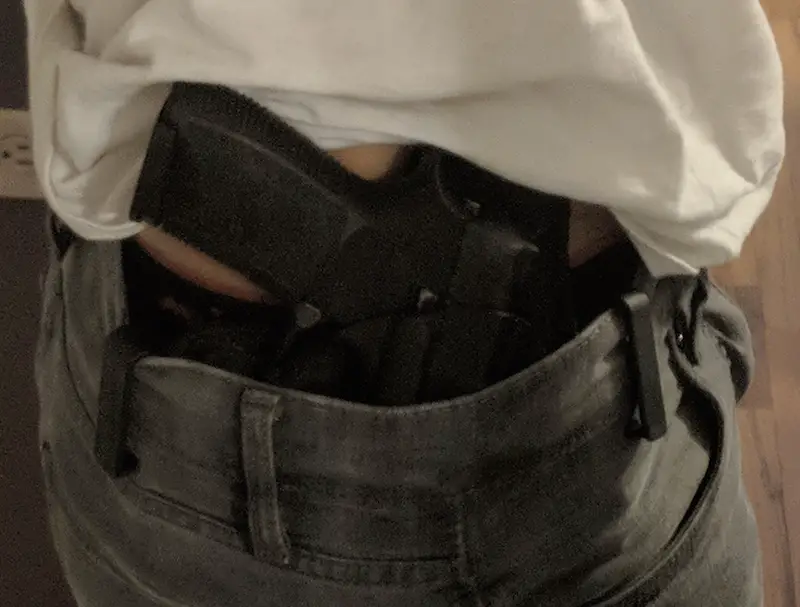
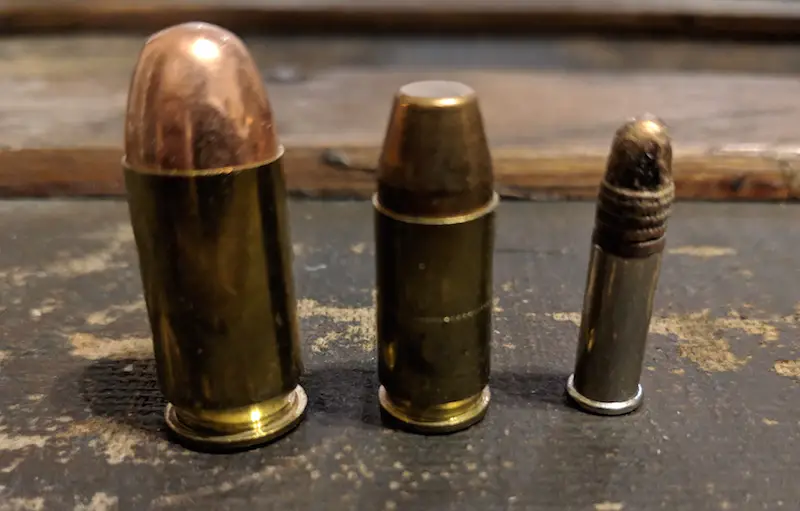
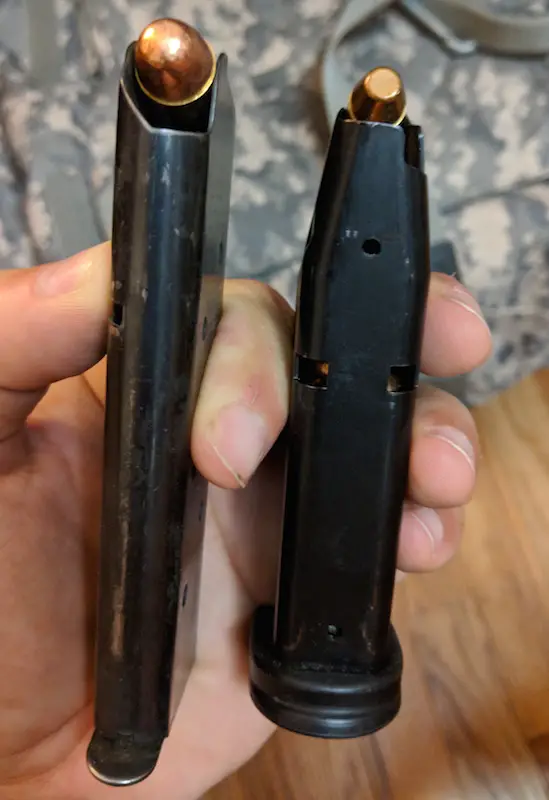
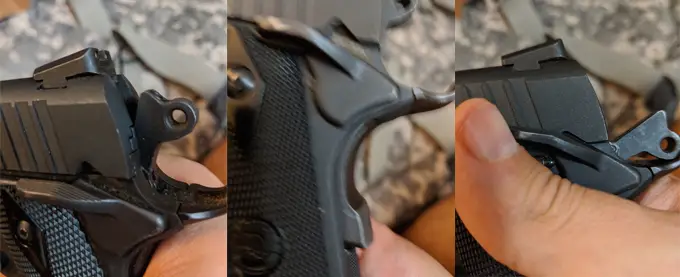
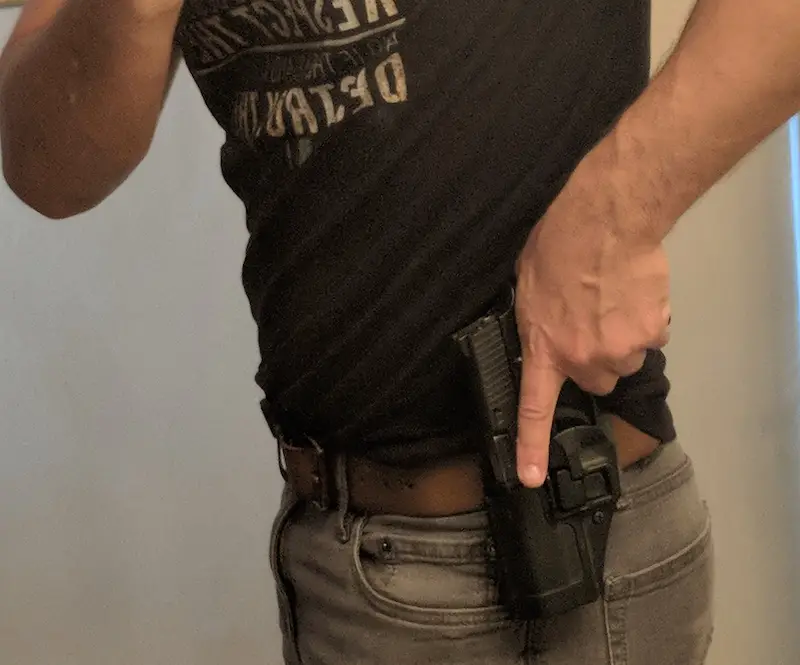
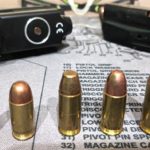








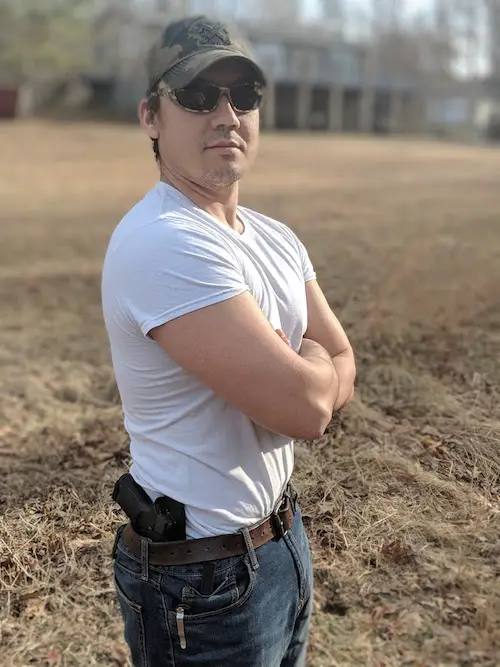
It makes sense that you should consider buying a light and small gun if you plan on carrying a concealed weapon around. My uncle just moved into a neighborhood that suffers from a lot of crime, and he wants to make sure that he is safe when he goes to work at night. It may be best for him to consider buying a small and light weapon for easy carrying.